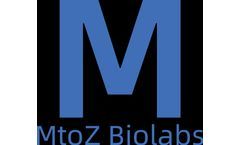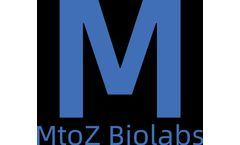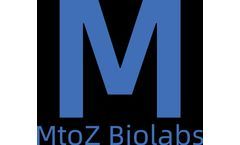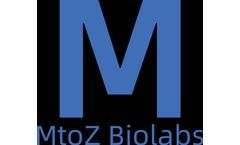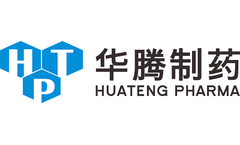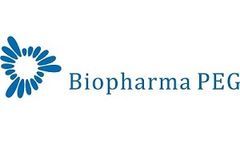Antigen Target Articles & Analysis
35 articles found
Advantages of Single-Domain Antibodies Size and Specificity: Their small size enables them to penetrate tissues more effectively and reach targets that larger antibodies cannot. This characteristic enhances their specificity and affinity for antigens. ...
In biomedical research, antibodies are a powerful tool used in the detection and quantification of target antigens. However, a comprehensive understanding of the antibody requires knowledge of its amino acid sequence, which can be achieved through antibody sequencing.Antibody sequencing is a nucleic acid sequencing process that determines the nucleotide sequence ...
This antigen-antibody binding is a critical mechanism used by our immune system to target and eliminate threats effectively. ...
Compared with traditional cytotoxins, ADCs have the advantages of strong targeting, less toxic side effects, etc. They can accurately target tumor cells, reduce side effects, and improve the therapeutic effect.ADC drugs are mainly composed of monoclonal antibodies, linkers, and small molecule cytotoxins. ...
The Unique Value and Challenges of Peptide Antigens in Antibody DiscoveryChoosing the right antigen is crucial in antibody discovery. ...
You can use GeneNames to find the official name of the target protein, and then use GeneCards to identify aliases to expand the possible search range, because antibody suppliers may use different aliases to name the same protein.Determine Other Information of the Target ProteinDetermine the isotypes, functional domains, processed forms, structural domains with ...
Therefore, the application of computer simulation is expected to reduce reliance on expensive and time-consuming trial-and-error experiments, promoting efficient progress in antibody research and development.Main Challenges in Antibody Discovery1. Difficult to Target Antigens and Novel Drug TargetsDifficult-to-target antigens and ...
Kate Sasser from Tempus led a discussion on the potential of antibody-drug conjugates (ADCs), their challenges in targeting tumor antigens, and the future of cancer treatment with Dr. Daniel Johnson, Dr. ...
ByTempus
To ensure the effectiveness and safety of these antibody drugs, it is necessary to perform activity testing.Definition of Antibody ActivityThe activity of an antibody drug usually refers to its ability to bind to the target antigen and how it affects the target in a biological function, such as neutralizing viruses, killing tumor cells, or ...
One of the first applications of nanobodies in drug delivery was the development of targeted drug delivery systems. Nanobodies can be engineered to specifically target tissues or cells of interest by conjugating them to therapeutic agents. This targeting ability minimizes off-target effects and increases the efficacy of the drug. ...
These therapeutic antibodies aim to specifically target antigens on the surface of cells and bind to them, leading to acidic reactions that result in the destruction of target cells. ...
BOC Sciences offers a variety of linkers, including cleavable linkers, non-cleavable linkers, and pH-sensitive linkers, to accommodate different drug payloads and target antigens. These linkers are designed to be stable in circulation but release cytotoxicity upon internalization by target cancer cells, ensuring maximum therapeutic efficacy while ...
Immunohistochemistry is the study of the localization, characterization, and relative quantification of peptides and proteins in tissue cells using the antigen-antibody reaction, in which an antigen specifically binds to an antibody and a chemical reaction results in the visualization of dyes such as fluorescein and other chromogens, as well as enzymes, metal ...
Each color microsphere is covalently cross-linked with a probe, antigen or antibody targeting a specific assay. The different microspheres bind proteins (antibodies or antigens for immunoassays) against different substances to be detected. The detection antibody is labeled with biotin and stained with a highly sensitive fluorescent dye. Coded ...
In order to ensure the selectivity and efficacy of ADC, linker should strive to achieve three key features :(1) High cycle stability: Payload will not be released before it reaches the target, thereby minimizing the off-target effects.(2) High water solubility: it is helpful for coupling and avoids the formation of inactive ADC aggregates.(3) Efficient release: ...
Antibody Backbone: The Starting Point for ADC Design l Selection of antigen specificity Since the mechanism of ADCs begins with the binding of target cells, the antibody should have high specificity for the target antigen. ...
They combine the high specificity of monoclonal antibody drugs with the high activity of small molecule cytotoxic drugs, which can improve the targeting of antitumor drugs and reduce the probability of toxic and side effects. An antibody drug conjugate (ADC) consists of three core elements: an antibody that targets a target ...
Structurally, an ADC consists of monoclonal antibodies (Antibody) that target specific antigens on tumor surfaces, cytotoxic drugs (drugs) that kill tumor cells, and linkers (Conjugate/ linkers) that conjugate cytotoxic drugs to antibodies. ...
In theory, molecules that bring effector molecules to the surface of tumor cells can play the role of antibody guidance The choice of antibody for ADC drugs depends on the target of the disease. Targets can be divided into tumor-specific antigens (TSA) and tumor-associated antigens (TAA) according to their expression. ...
STEAP1, TROP2, PSMA, CD46, and B7-H3 are currently being looked at as optimal antigens, which have been shown to be targeted by ADCs. 1. ADC For The Treatment of PCa PSMA-based ADCs PSMA (prostate-specific membrane antigen) is a cell membrane protein specifically expressed by prostate cells, and its expression in PCa and metastatic cells is ...


